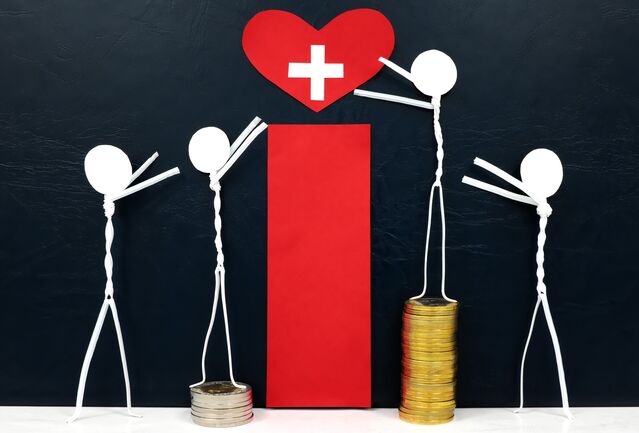Why Are There Class Differences in Health Behaviors?

Resource: sulit photos/Shutterstock
Class-centered wellbeing inequalities are persistent in culture and are, in element, pushed by discrepancies in well being behaviors. Policy makes an attempt to make improvements to health behaviors in disadvantaged communities have had confined success and have highlighted the incapacity of present theory to completely account for class-primarily based distinctions in overall health.
A novel tactic to answering this community wellbeing puzzle is to examine the position that perceptions of regulate more than risk engage in in figuring out well being behaviors. The Uncontrollable Mortality Danger Hypothesis provides an explanation for why course-centered distinctions in overall health behaviors exist and it offers new insights into how to handle the problem.
Course-centered variations in health behaviors
Despite improved accessibility to healthcare and prevalent health and fitness information strategies in produced nations, class discrepancies in wellbeing even now exist and are strongly pushed by structural inequalities which, in transform, influence wellness behaviors. For illustration, people from less affluent backgrounds generally report reduced fees of workout, have considerably less wholesome diet plans, bigger premiums of cigarette smoking, and reduced adherence to health-related remedy. Notwithstanding the simple function that the availability of sources and details can participate in in producing wellbeing inequalities, attempts to make improvements to well being behaviors have had confined achievements and have highlighted the incapability of existing theories in public overall health to reveal societal variances in wellbeing behaviors.
The Uncontrollable Mortality Hazard Hypothesis
The Uncontrollable Mortality Possibility Hypothesis uses strategies from evolutionary biology to reveal dissimilarities in health behaviors across culture. It states that these who are additional probable to die thanks to factors that are beyond their manage must be significantly less determined to acquire treatment of their wellbeing due to the fact they are considerably less likely to stay to see the extensive-phrase rewards of a wholesome way of life.
On the lookout soon after your health and fitness takes work. The more time and strength you devote in heading to the health club, protecting a healthful diet, giving up smoking cigarettes, or chopping down on liquor, the fewer electrical power you have for other routines, like socialising, obtaining a companion, or doing the job your way up the job ladder. Therefore, there is a trade-off amongst investing in your extensive-phrase well being and undertaking other factors. The amount of hard work that a person may possibly be anticipated to make investments in their well being depends on the stage of risk they expertise, and this may aid to explain societal variations in well being behaviors.
The perceived uncontrollable mortality hazard is that part of the possibility of demise that somebody believes cannot be mitigated by wellbeing efforts. Daniel Nettle formerly argued that the optimum stage of specific investment decision in health and fitness conduct should really be considerably less for folks of decrease socioeconomic course simply because they are generally uncovered to larger degrees of uncontrollable possibility. This is supported by a variety of evidence displaying a destructive partnership concerning social course and exposure to threats that are destructive to our health and fitness, such as dangerous waste, air pollutants, very poor drinking water good quality, threats of violence, and COVID-19 infection and fatality costs.
Gillian Pepper and Daniel Nettle found that social class discrepancies in the quantity of exertion that people say they invest in their health and fitness have been solely discussed by perceived uncontrollable mortality hazard. This indicates that the marriage between course and health habits might be dependent on perceptions of regulate more than risk.
Also, modern research during the COVID-19 pandemic observed that perceived uncontrollable mortality threat was involved with decreased adherence to govt guidance on diet regime and actual physical action, as well as larger ranges of using tobacco. Thus, checking out how we understand uncontrollable mortality chance may enable us to much better recognize overall health behaviors and tackle socioeconomic gradients in overall health.
Community wellness implications
The Uncontrollable Mortality Hazard Hypothesis has a range of implications for community wellbeing. First of all, if another person is a lot less motivated to devote in preventative overall health behaviors due to the fact they consider that they are unlikely to dwell to appreciate the extended-time period gains, emphasising the rapid rewards of nutritious behaviors, somewhat than the prolonged-expression benefits, may well assistance to incentivise much healthier lifestyles. For case in point, in its place of telling persons that a balanced eating plan may well increase several years to your existence, well being messages could emphasise that taking in your “5 a working day” offers you visibly more interesting skin in 6 months. By highlighting the limited-term advantages of a nutritious eating plan, health and fitness messages may incentivise a lot more constructive well being behaviors, even amid all those who experience they can do really tiny to manage the pitfalls they experience.
On top of that, measuring perceived uncontrollable mortality threat may well support to discover dangers that are commonly thought to be past personalized regulate. Do men and women experience like they can regulate their threat of heart sickness extra than that of specified types of cancer? What about diabetes or respiratory disease? Sensation that specific hazards are past their management might stop people today from participating in the specific behaviors that assist to lessen their risk. Identifying the risks that are widely believed to be uncontrollable may perhaps support to design and style qualified interventions for enhancing wellness behaviors involved with specific dangers. Most importantly, this may perhaps assist to spotlight the structural disparities in exposure to threat and superior deal with the environmental results in of wellbeing inequalities.
General, the impact of uncontrollable mortality threat on health behaviors has been understudied. Nonetheless, checking out the function that perceptions of handle above danger participate in in pinpointing health and fitness behaviors could assistance to demonstrate and handle course-based inequalities in health and fitness.
